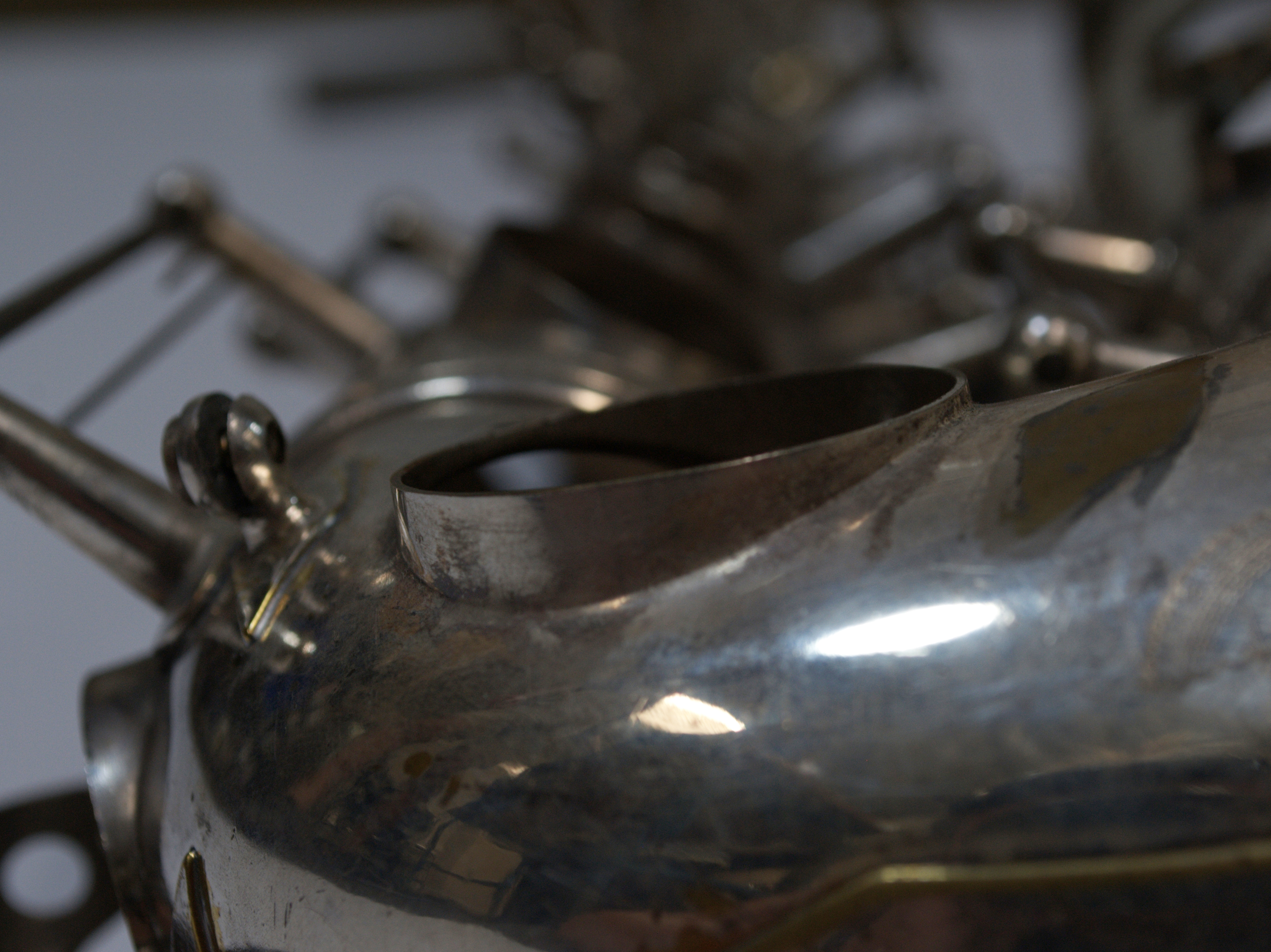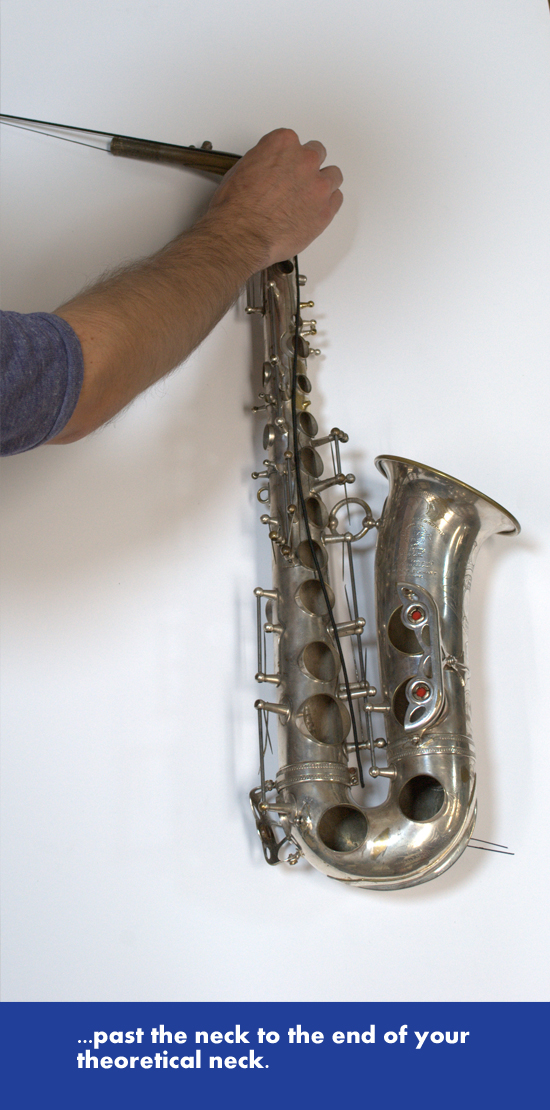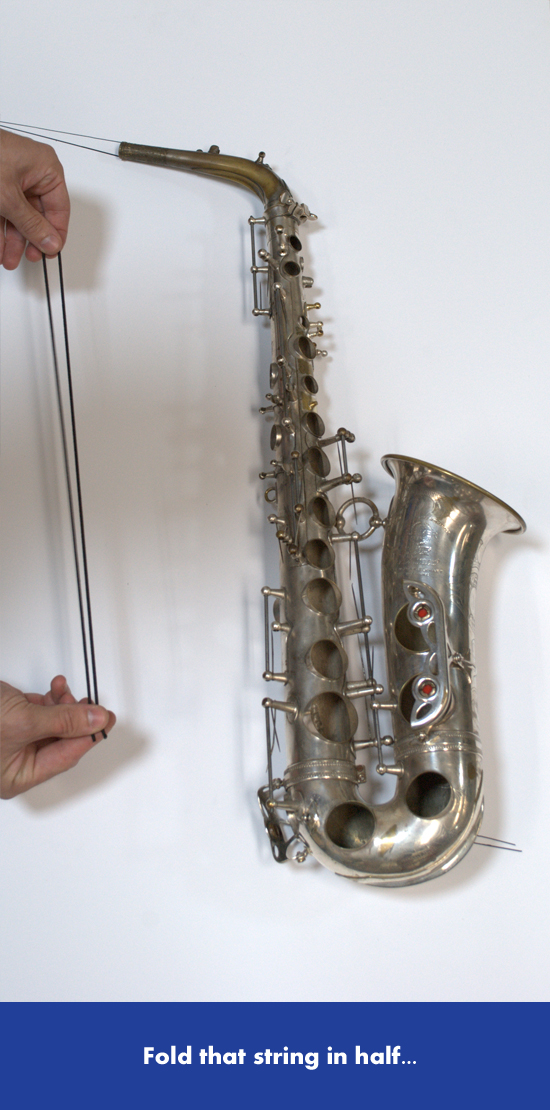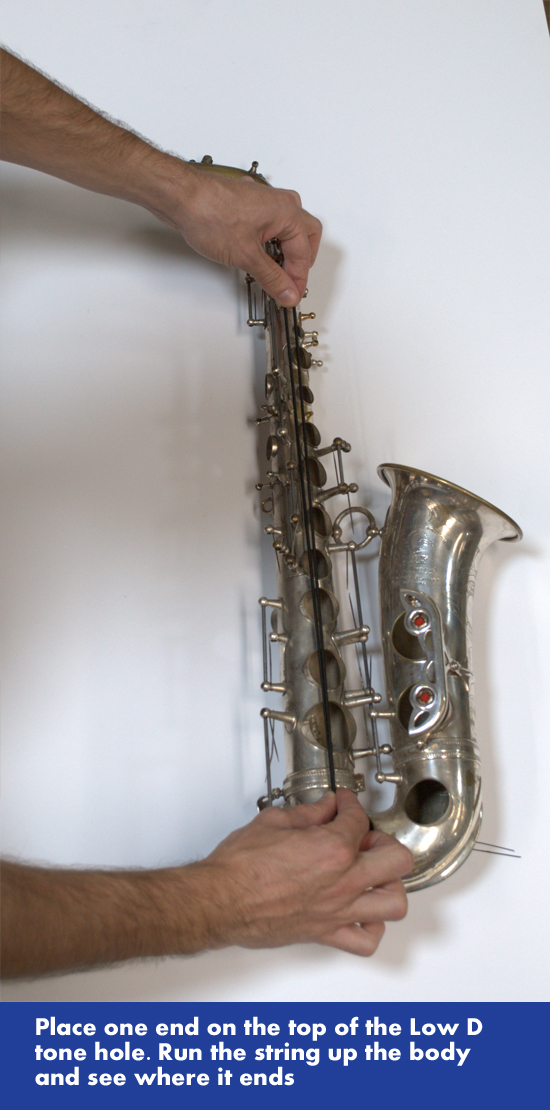Tuning a Saxophone: Part 1
For years I worked on Saxophones and learned to tune them very effectively. My work was limited to adjusting the intonation of notes in relation to each other, adjusting the width of a scale, and moving tone holes to change single notes. After many experiments and much research, I made a discovery about tuning the octaves on a saxophone.
Luckily I went through that time when I could not tune octaves and was forced to find creative ways to make instruments play as in-tune as possible for some very discerning players. Very often I draw on this knowledge and trickery I gained from trying to find ways around my lack of knowledge. That often allows me to the freedom to avoid doing major tuning work that may change some fundamental characteristics of the instrument or just cost a lot of time and money. I mention this point in the opening of this article to stress the importance of understanding all parts of the intonation of a saxophone before assuming one issue can be fixed to solve the problem. Understanding how mouthpiece placement, key heights, and tone hole location affect intonation and even how these things affect each other is key to a successful and thoughtful tuning job.
My goal in writing this article is to share with you a knowledge of tuning that I have yet to find readily available; altering the octave spread on a saxophone. I hope to give you information that is practical and usable. I find a huge divide between practical repair and acoustical science. I hope that my work, shared with you, will bridge this gap and help technicians to incorporate more practical acoustical work, such as tuning and toning, into their everyday repairs.
Note that an octave is a unit of measure and normally adjusting it would not be possible as it would become something other than an octave. However, in music and particularly on saxophone, we assume that octave means a range and a perfect octave is the goal. In this article, I hope to show you where to modify the bore to correct octaves. In the next article, I will show you some ways you can go about modifying the bore of the instrument to tune.
How to approach intonation on a saxophone.
When considering the intonation of a given saxophone, after having proper mouthpiece placement, begin to collect the data from the tuner and contemplate the best course of action for adjusting the intonation. First, consider the intonation of the fundamental notes on the instrument. I call the lower notes that play in the first octave, those played without the octave key, fundamental notes. These notes, unlike those played with the octave key, are the lowest note that can be played with the given length of tubing; they are the fundamentals of their harmonic series. When I play these fundamental notes into a tuner, I am considering how their intonation relates to the intonation of the notes surrounding them. I’m also comparing the intonation of the fundamental to its octave with a keen eye on the octave spread, or length of the octave. From this, you can quickly figure out: What notes are flat or sharp in both octaves? What octaves are out of tune and in which way? With this information, start to develop a plan to fix the intonation issues.
A saxophone is, very simply, a tapered tube with holes in it. When we attempt to tune a saxophone, we have only a few things at our disposal to work with. We have the tapered tube, the tone holes, and the key heights. With these three things, we can change everything about the intonation of a saxophone. However, for the sake of time and money (my customers’ money) I first consider how I can solve the problem without major modifications. For example, often intonation can be corrected (or ruined) with key heights alone.
Tone Holes don’t affect octaves
This article is specifically about adjusting the distance between “octaves” on a saxophone. The holes that run down the tube serve to change the length of the instrument as the player moves his or her fingers depressing various keys. Each hole down the saxophone tube produces a note that is one-half step lower in pitch. The location of the holes on a saxophone body, along with the placement of the mouthpiece, dictate the intonation of the first octave (or fundamental), on the saxophone. If a technician were to move a tone hole, the note would change depending exactly on where the tone hole was moved to. This note would, for the most part, change exactly the same in both octaves.
Moving tone holes is an effective way to fix some intonation issues on saxophone especially when the issue is apparent in both octaves. There is some discussion about tone holes and their placement in this article I wrote about tuning saxophones with crescents. In this article, I want to tell you about changing the pitch of a note in the second octave, or another way to look at it, changing the octave spread.
Key Heights don’t affect octaves.
Key heights DO affect intonation but Key heights DO NOT affect the distance between the octaves or octave spread. There is an article on key heights and intonation here if you would like to know more about key heights. There is more to consider about key heights than I have written in articles at the time of this writing. When I can, I will put some into article form. No matter though, key heights never affect the octave spread.
Body Taper affects intonation of octaves on saxophone
The taper, or the tube, and the degree to which the instrument is tapered affects the relationship between the first and second octaves on a saxophone. When I talk about the tapered tube that is a saxophone, I am speaking of the entire instrument including the neck, not just the main body section. It is the shape of the saxophone body alone that forces many saxophones to play sharp in the second octave and some to play flat. Or worse, some instruments play sharp in one part of the second register and flat in other parts. If the problem is octaves that don’t play octaves, the cause is likely the shape of the bore.
Once you understand this, you will have a better chance of diagnosing the intonation of a saxophone. For this article, we are going to make a lot of assumptions, many of which are not often true in the real world of saxophone tuning. That said, for this article, let’s assume that all the fundamental notes (those notes played without the octave key or notes up to open C#) are all in tune with a tuner. Consider that, if it were the case that the first octave played very well in tune, this would tell you that the mouthpiece was in the right location and the tone holes are as well.
The Problem: Wide or narrow octaves.
Saxophones have a common intonation problem, octaves tend to be too spread or too short. Most often some of the second octave notes are sharp because the octaves are too wide. If this is the case, and solving that isolated issue only, you can locate the areas in the bore specifically that adjust the spread of those problem octaves and begin to fix the problem.
Locating the Areas in the Bore that adjust specific octaves: Tuning regions

There is a place in the bore of a saxophone that one can change to affect the intonation of a second octave note. This location is easy to locate once you know a couple parameters. There are certainly ways to pinpoint these locations, but that is unnecessary in most cases. To find the tuning region of a note on a saxophone, you need to know where the instrument ends and the first open tone hole. Let me explain.
When a saxophone is played the first open tone hole dictates the basic length of the instrument. No matter what note, in the second octave, that you are wanting to tune, you first need to find the location of the first open tone hole when this note is played. For example, when you play low D or a middle D, on the alto sax, the pad we call the low C pad is the first open pad. Of course, the tone hole under it is the first open tone hole. This is the tone hole located on the front of the saxophone bow near the bottom. With this tone hole located we have one part of the puzzle.
The saxophone is a tapered tube where the small end of the tube is truncated. The end of the cone is cut off, this is where you put your mouthpiece. For tuning purposes, let’s pretend that the end of the neck is not truncated, that it continues to a point, this is often called the theoretical neck. To locate the tuning region for a second octave note, we will want to know roughly where the theoretical neck ends. With this, you can find the tuning region for a second octave note. To gather this information, you use your eye and imagine the taper continues or math. As we will ultimately check our work by playing the instrument, the method of imagining where the neck might come to a point will suffice.

Now that you know where the sound comes out, the first open tone hole, and where the end of the theoretical neck is, finding the tuning region for our example note D is simple. The region we find will tell us where, in the bore, we would need to make a modification to alter the saxophone note D2. Although you will not need to measure once you have even a little practice finding tuning regions, measuring is a good way to start your education.
There are a few ways to find the tuning region. One involves math, one involves playing, and one measuring. Let’s talk about measuring first. Get a string and place it on the top of the low D tone hole (where D comes out) and run it up the body, past the neck to the end of your theoretical neck. Now, fold that string in half and place one end on the top of the Low D tone hole. Run the string up the body and see where it ends. You will likely notice that the string ends around the palm Eb tone hole. This is your tuning region for second octave D.
 |
 |
 |
 |
As you see, the tuning region for second octave D is halfway between the top of the tone hole and the end of the theoretical neck. This appears to be true for every note on the saxophone; the tuning region is halfway between the tone hole and the end of the theoretical neck. In the case of D, there is a tone hole that you can verify your findings. In doing so, you are using another method of finding the tuning region for a note.
Play the note that comes out when you play a palm Eb without the octave key. When you open the Eb pad and play that note, it should play an in tune or out of tune D. So, the location of the bore that you tune with is directly between the top of the first open tone hole and theoretical neck AND in the location that plays an octave above the fundamental.
Some notes, like my example of low D, have a tone hole in the location that we tune with. The tone hole is always a palm key tone hole. Don’t confuse the location of the tuning region with the note you play from the palm key. For instance, when you play a palm F with octave key, you get an F3. However, if you play that same fingering but without the octave key it will usually be a lot flatter and may even be an E or an Eb. So the location of the palm F tone hole in this instance would be the tuning region for second octave E or Eb.
Now, let’s look at a note that does not have a tone hole in the tuning region. For example, the note A. To find the tuning region for the note, A, find the first open tone hole when the note A is played. This tone hole will be below the G pad. Measure with your string. Once you find the area halfway between the end of the theoretical neck and the top of the A tone hole, you will be close to the tuning region for the note A. This region, located on the neck near the octave vent, will help you to tune the note A2 (A with octave key) on the saxophone. Again, if the note is sharp you will need to decrease the bore diameter in the area that corresponds to A2.
What to do with your newly discovered tuning region.
Once you have found the tuning region for a note, you can change the bore diameter, or volume, to tune the second octave note that corresponds to that region. If the second octave note is sharp, you will want to decrease the bore volume in that area, if the note is flat, you will need to increase the bore in that area. As you experiment with this method of tuning, the results should always be predictable and noticeable. That is, I never think a note is going to drop 30-50cents only to find that the results of altering the tuning region of that pitch are contrary to what I’ve seen previously. If you find that your results are not as you predicted, you have miss measured or your predictions were wrong for some reason.
As I mentioned, when tuning a saxophone I take in several factors. Now that you know something about tuning octaves on the saxophone, I hope you can incorporate this information into what you know already and what you will learn.